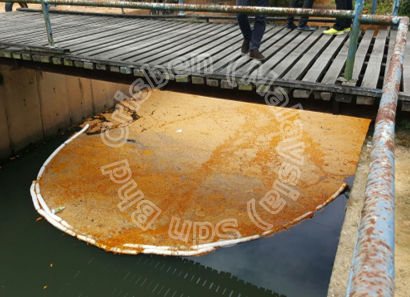The Minamata Tragedy: A Dark Chapter in Industrial History
In the picturesque town of Minamata, Japan, nestled along the coast of the Shiranui Sea, lies a haunting tale of environmental devastation and human suffering. The Minamata tragedy, one of the most infamous cases of industrial pollution, serves as a chilling reminder of the catastrophic consequences of neglecting environmental regulations and human safety in pursuit of economic growth.
The roots of the tragedy can be traced back to the mid-20th century when the Chisso Corporation, a chemical company, established a factory in Minamata. The company’s operations included the production of acetaldehyde, a key ingredient in the manufacturing of plastics, among other products. Unbeknownst to the residents of Minamata, Chisso’s industrial activities were releasing toxic methylmercury into the surrounding waters.
Methyl Mercury is a highly toxic compound that accumulates in the food chain, particularly in fish and shellfish. As the contaminated seafood made its way onto the dinner tables of the local populace, the residents of Minamata began to experience mysterious symptoms ranging from numbness and loss of coordination to convulsions and severe neurological disorders. Babies were born with congenital deformities, and the once-thriving fishing community found itself in the grip of a silent epidemic.
The impact of methylmercury extended beyond human health, leaving a devastating mark on the environment. Fish and other marine life in the Shiranui Sea became contaminated, disrupting the delicate ecological balance of the region. Species populations dwindled as the toxic effects of mercury poisoning cascaded through the food web, leading to widespread ecological damage.
The contamination also had repercussions beyond Minamata, with methylmercury entering the global marine ecosystem through ocean currents and migratory species. The widespread distribution of mercury pollution posed a threat not only to marine life but also to human populations dependent on seafood as a primary source of nutrition.
Efforts to mitigate the environmental impact of the Minamata tragedy have been ongoing for decades. Remediation efforts have focused on cleaning up contaminated sediments, restoring habitats, and monitoring wildlife populations for signs of recovery. However, the long-term effects of mercury contamination persist, casting a shadow over the region’s ecological health.
As we reflect on this grave tragedy, it is clear that knowledge and preparedness are essential tools in safeguarding against similar environmental catastrophes. With the right information and equipment, individuals and communities can identify potential risks, implement preventive measures, and respond effectively to environmental threats. In this regard, Crisben (Malaysia) Sdn Bhd takes up a crucial role in providing the necessary expertise, resources, and support to ensure the safety and well-being of both people and the society. By empowering individuals with the correct knowledge and equipment, we can collectively work towards a future where tragedies like Minamata are not only prevented but also serve as powerful reminders of the importance of environmental stewardship and accountability.



